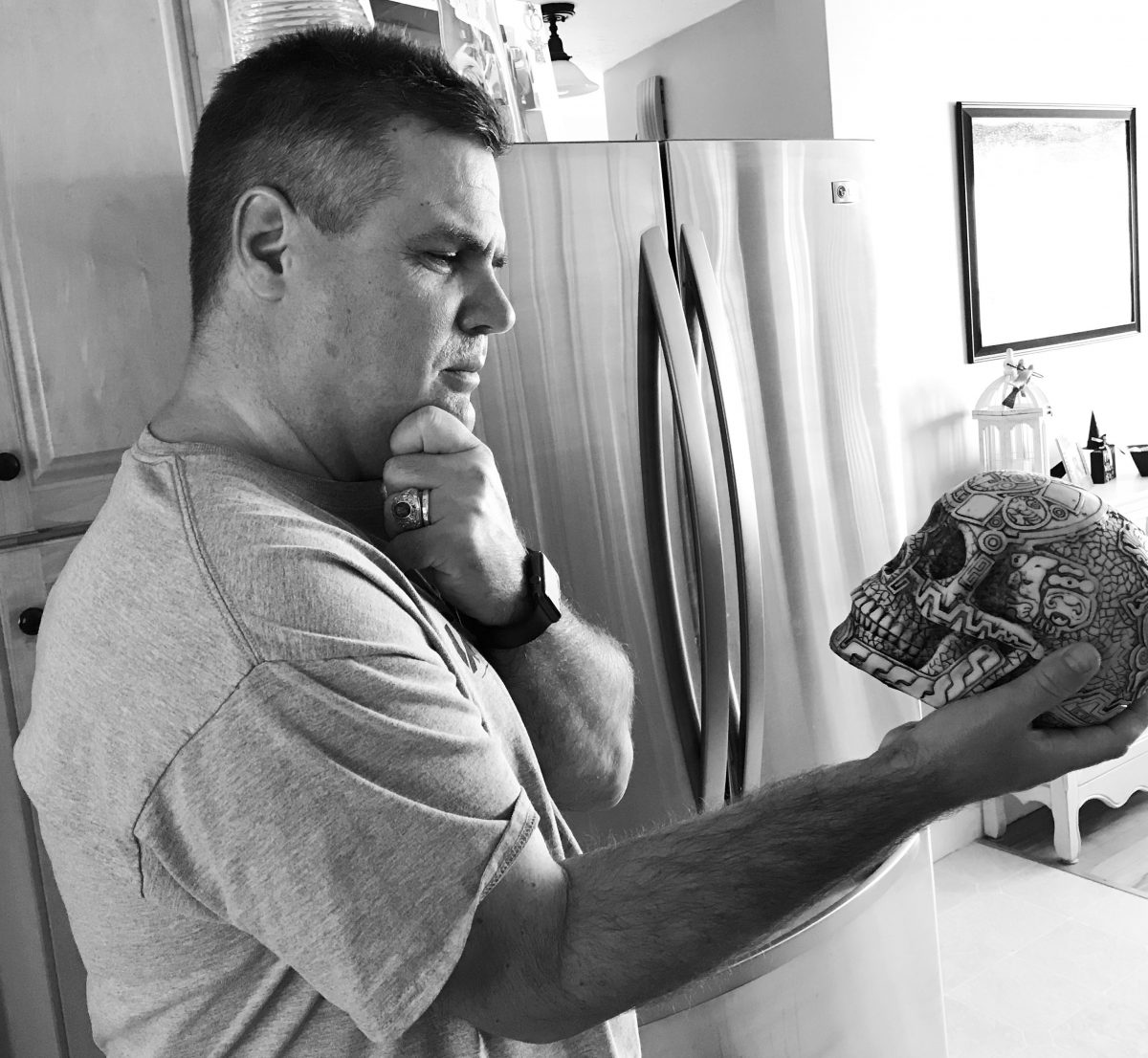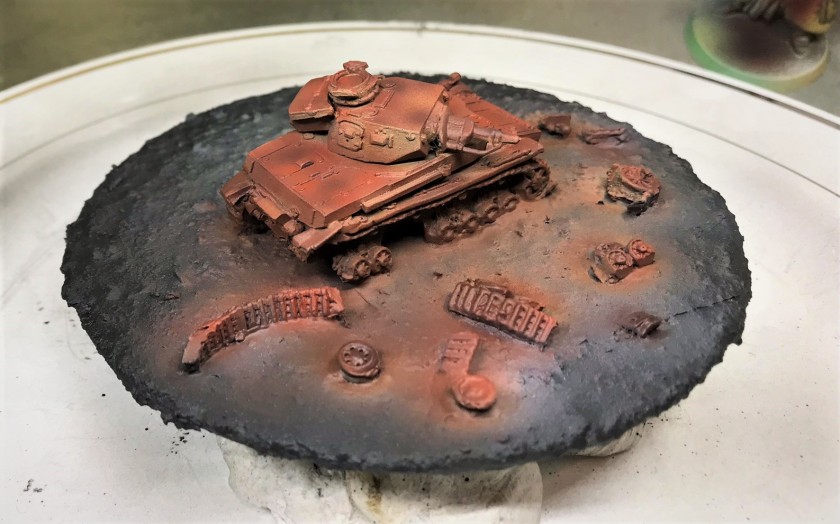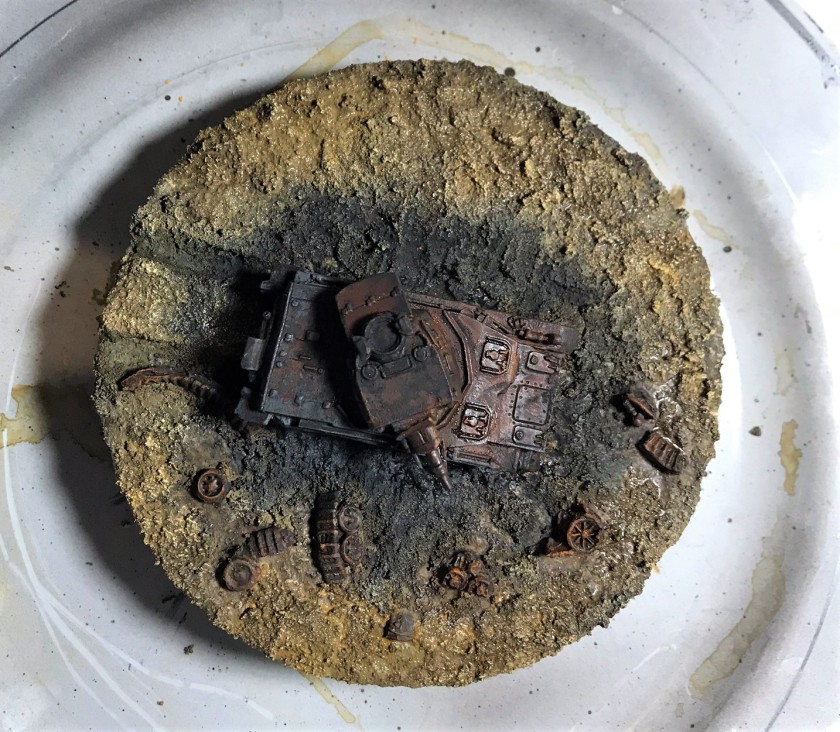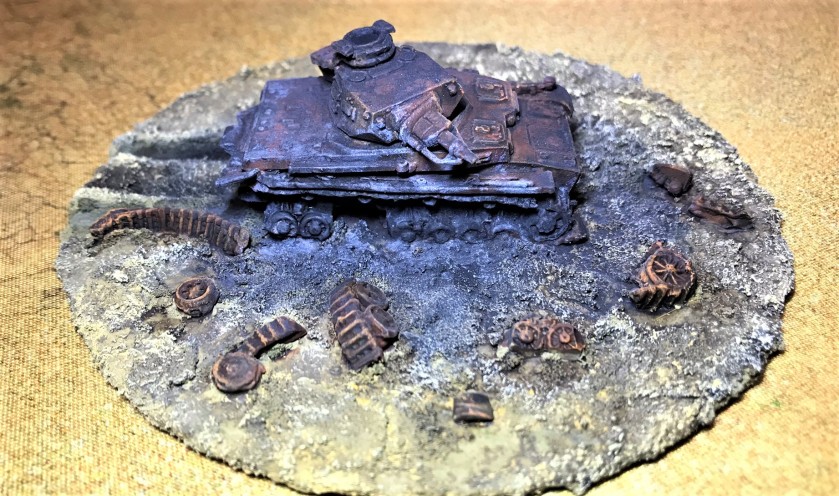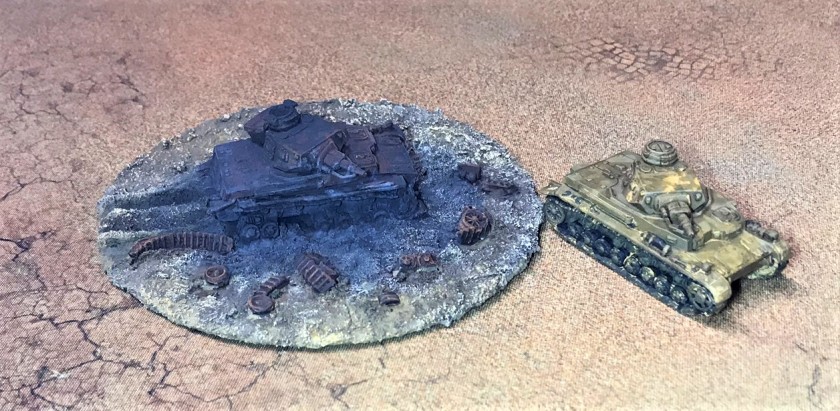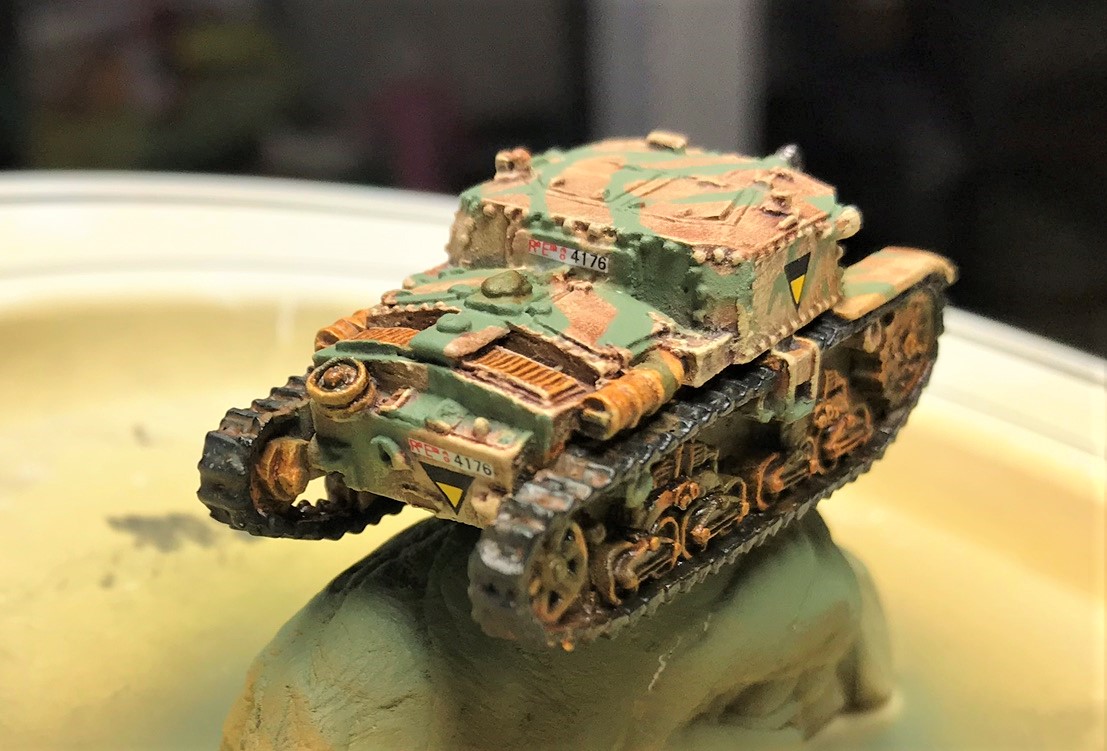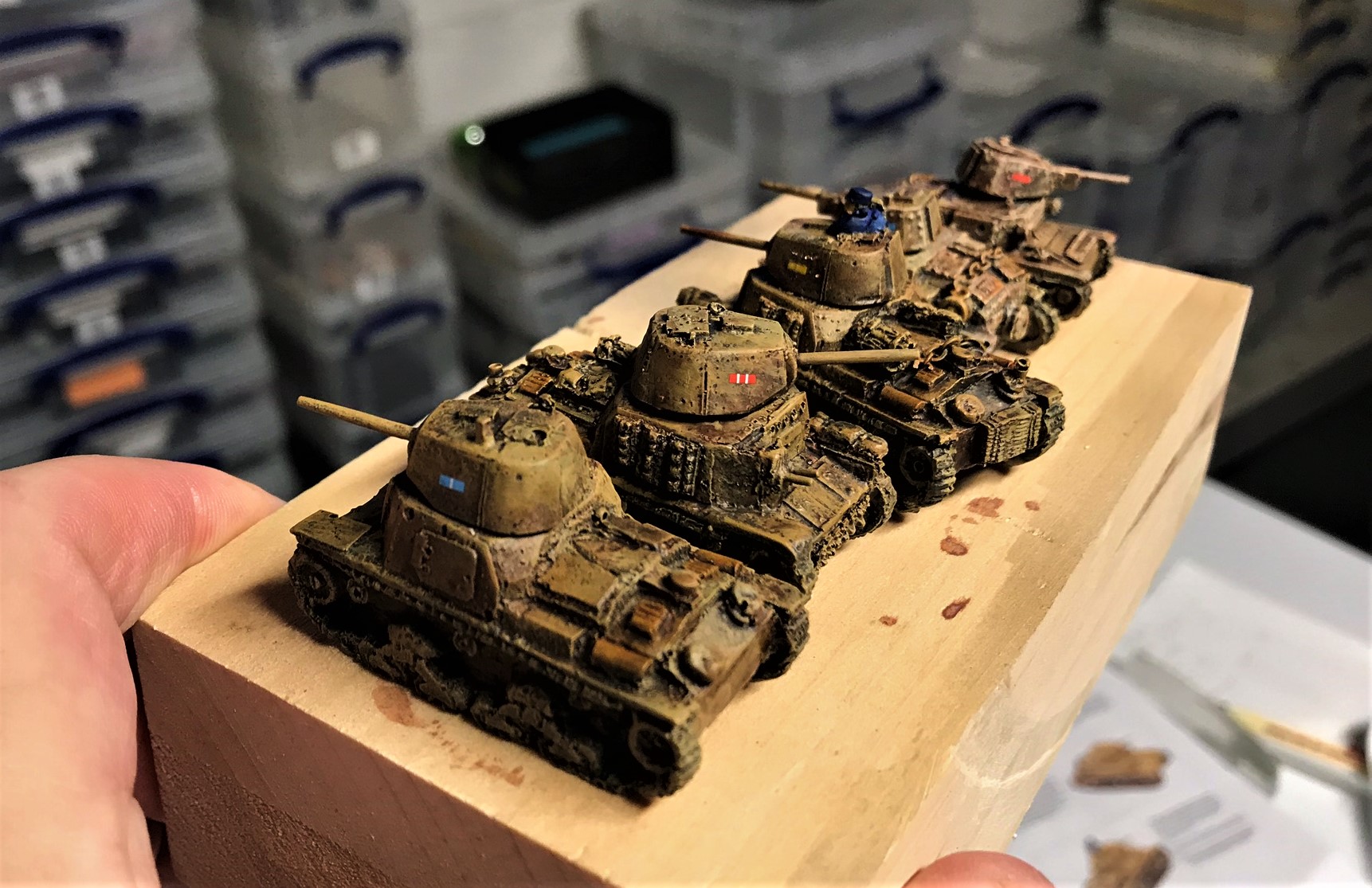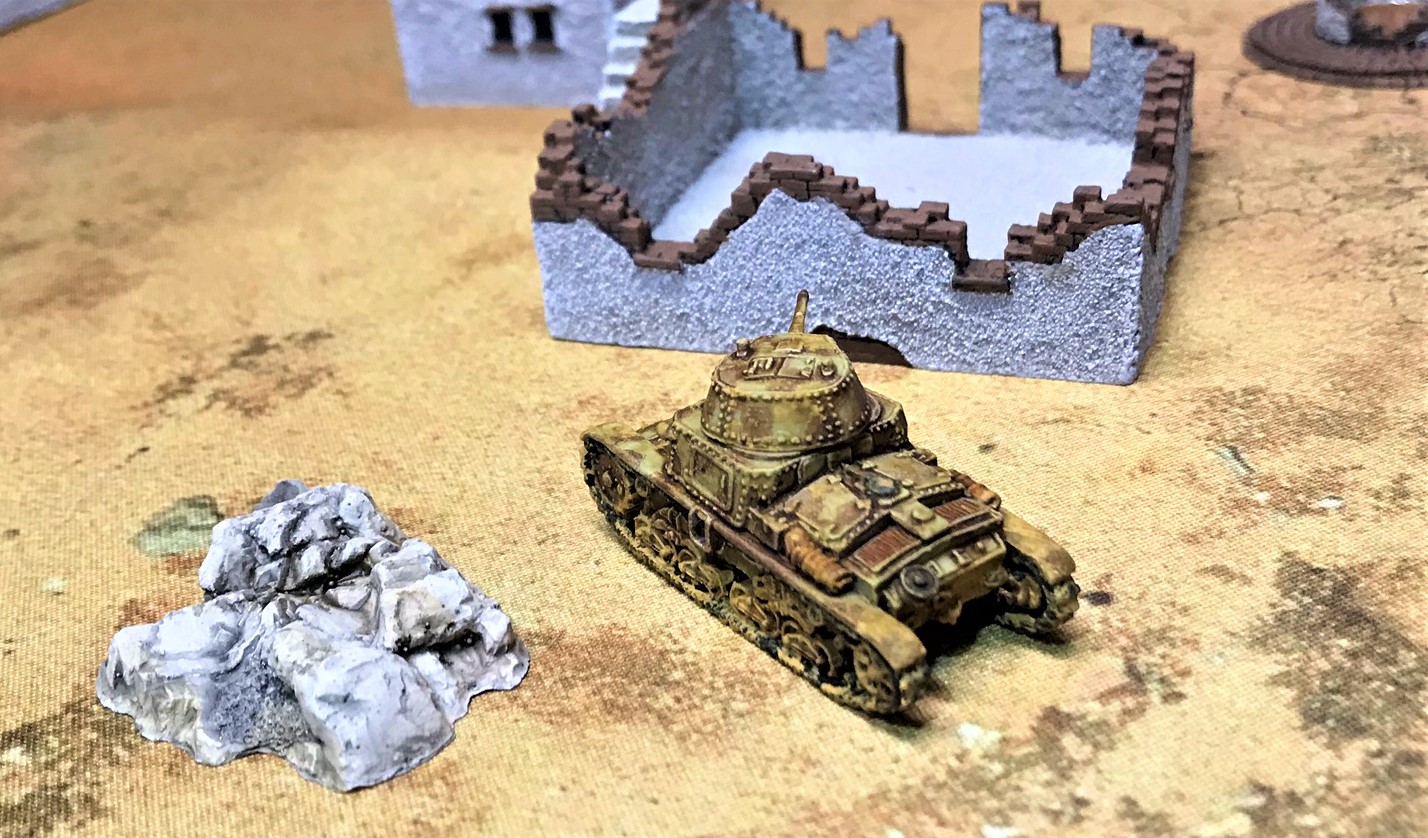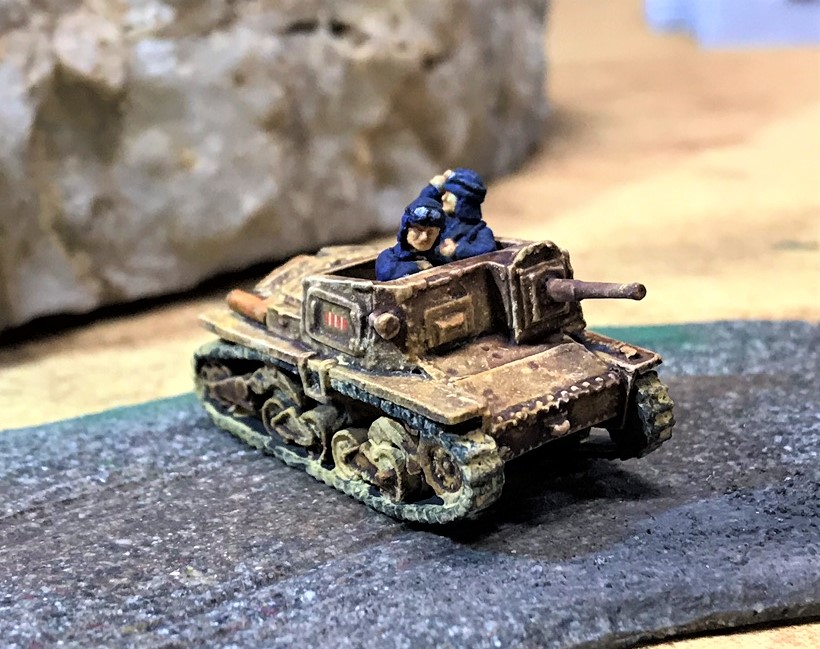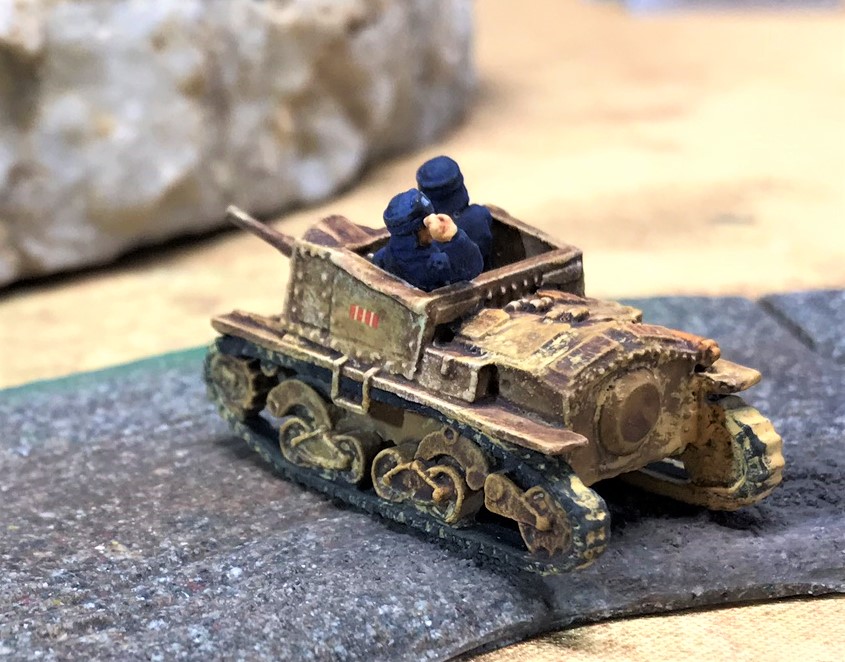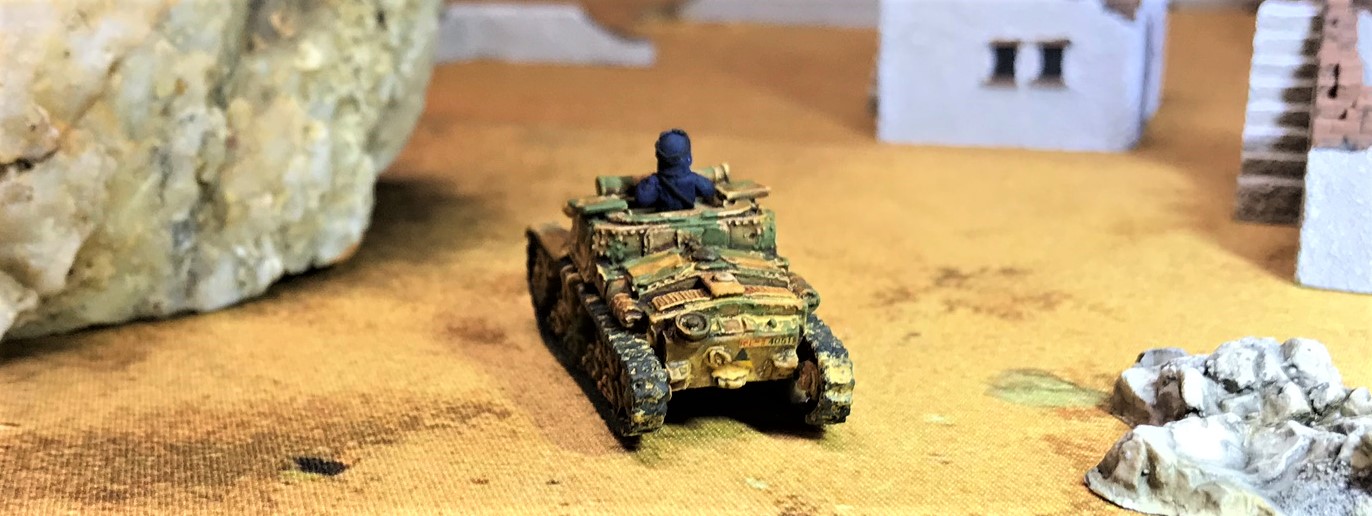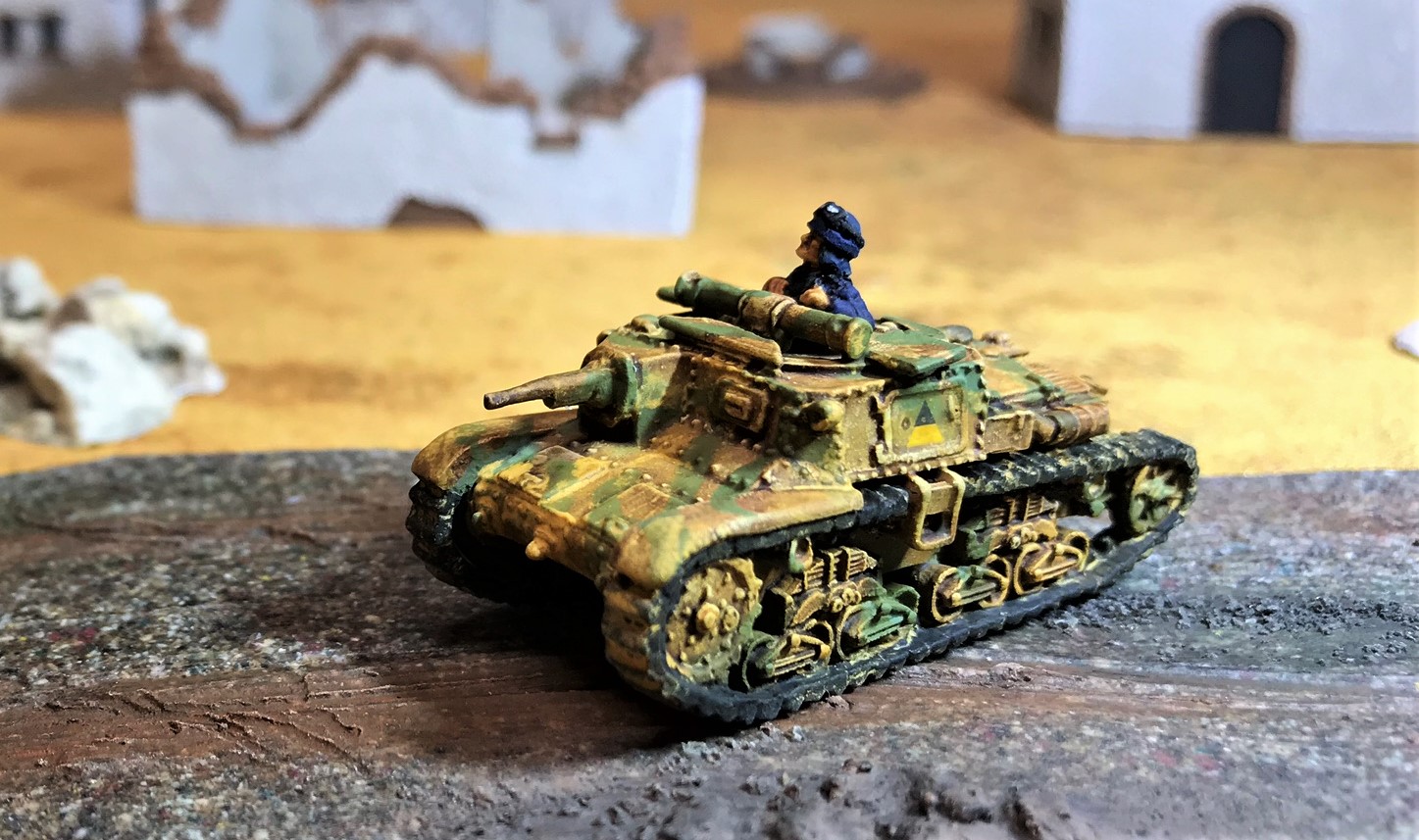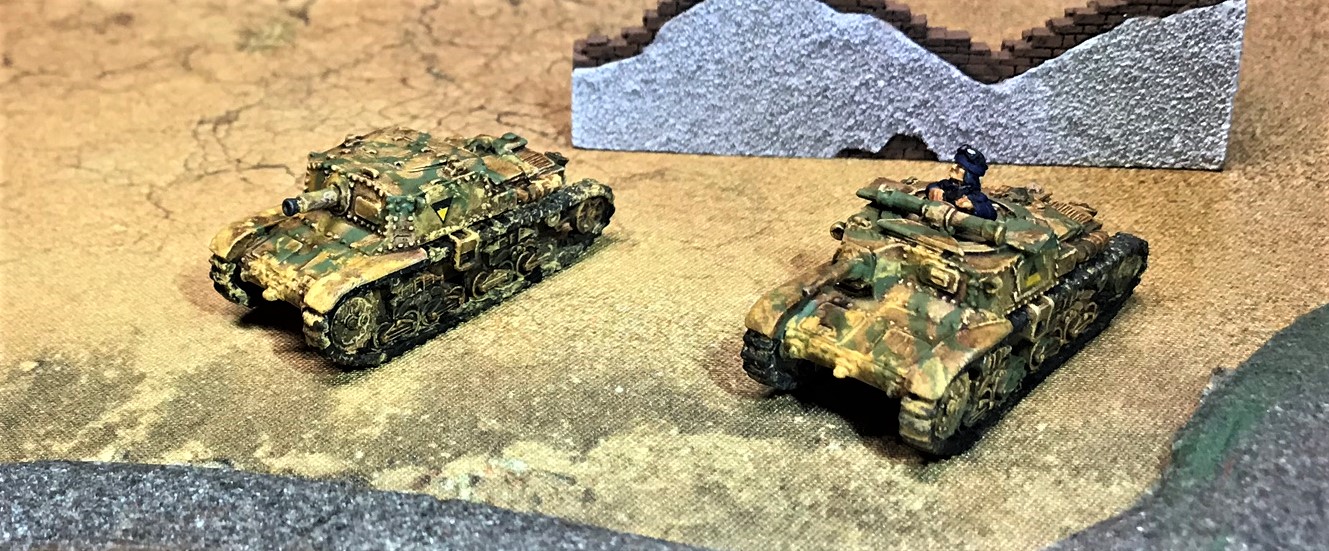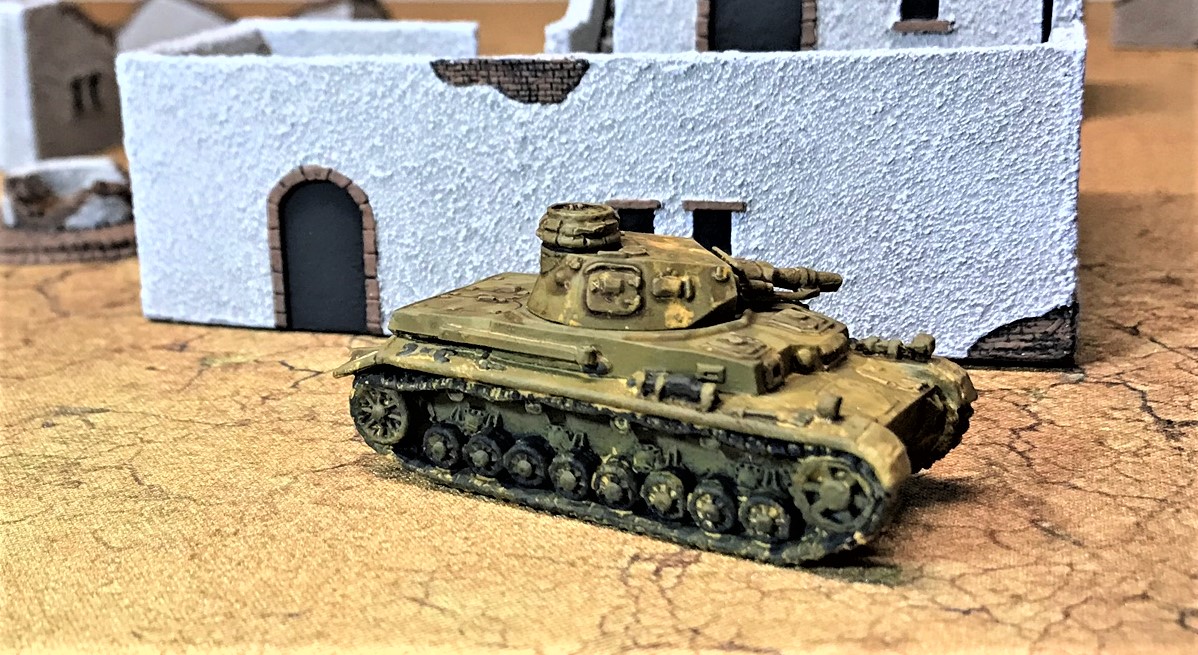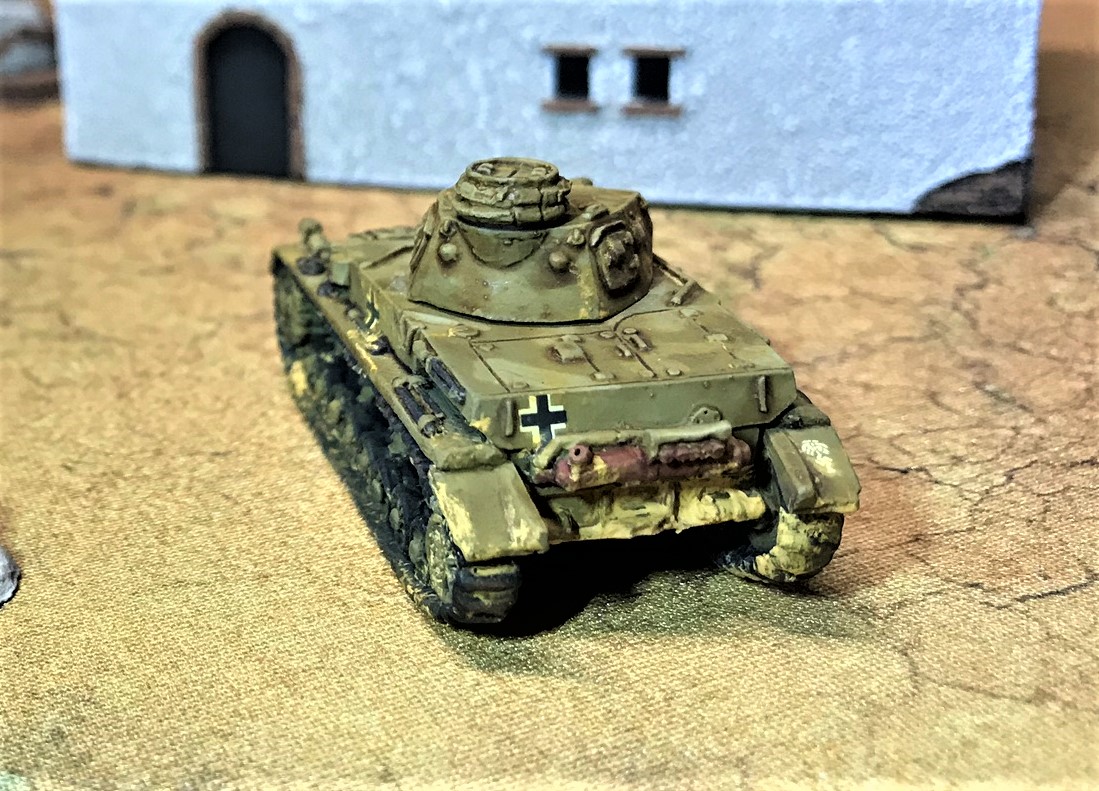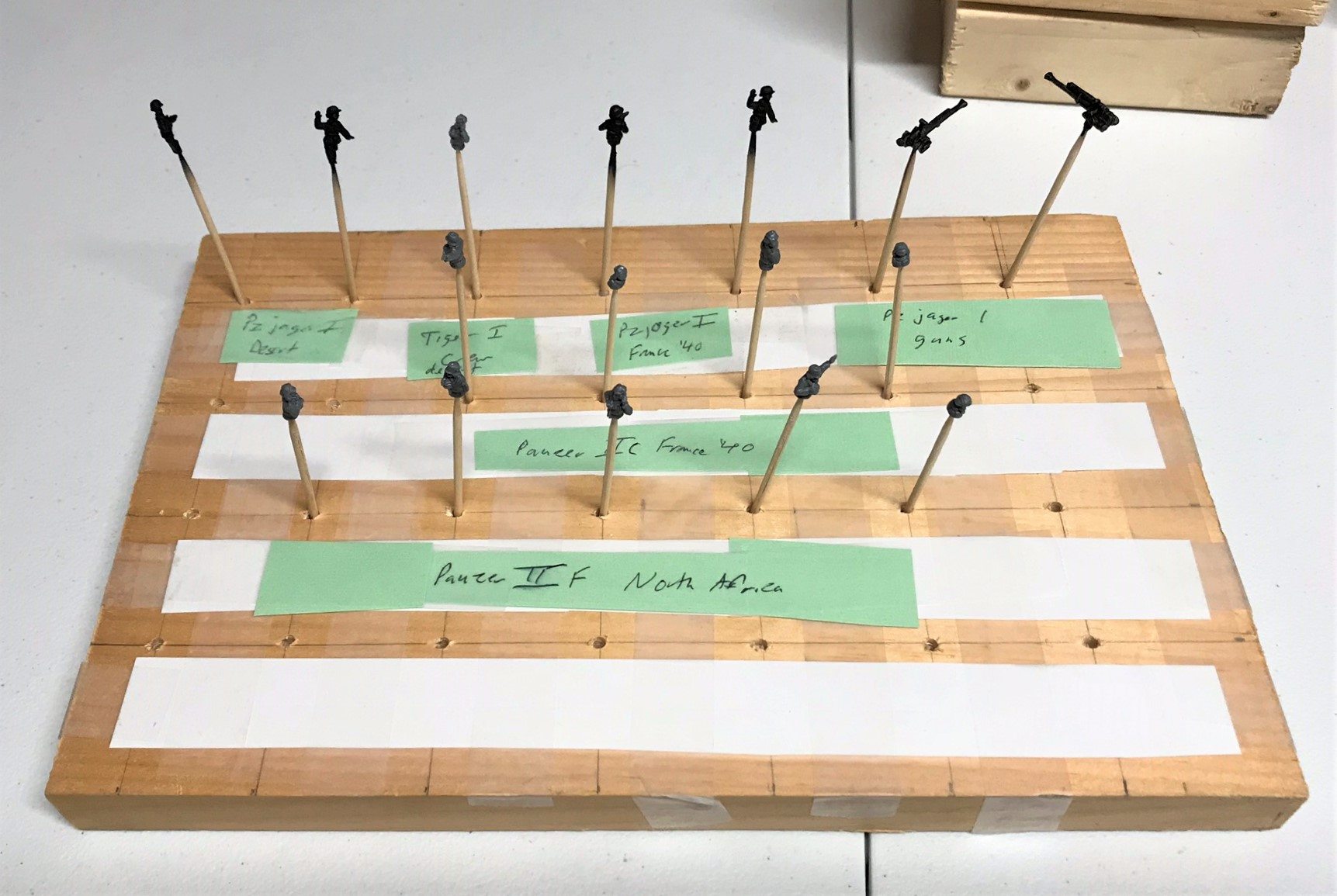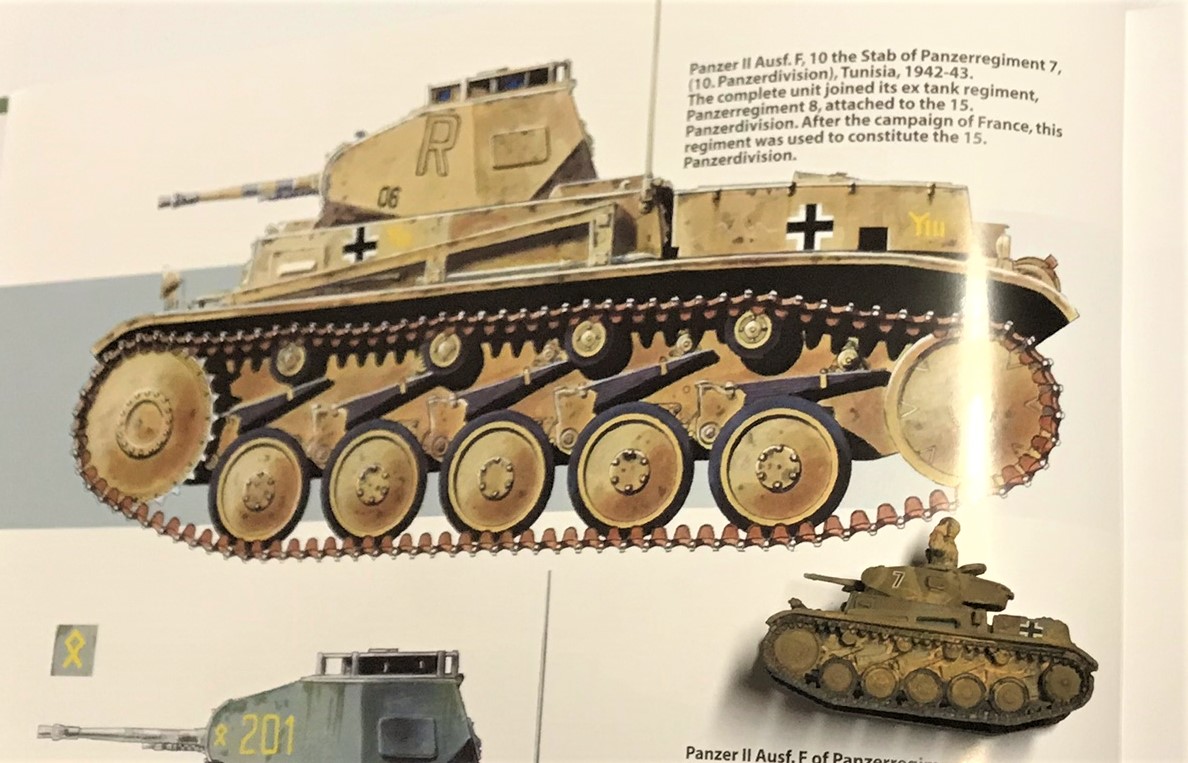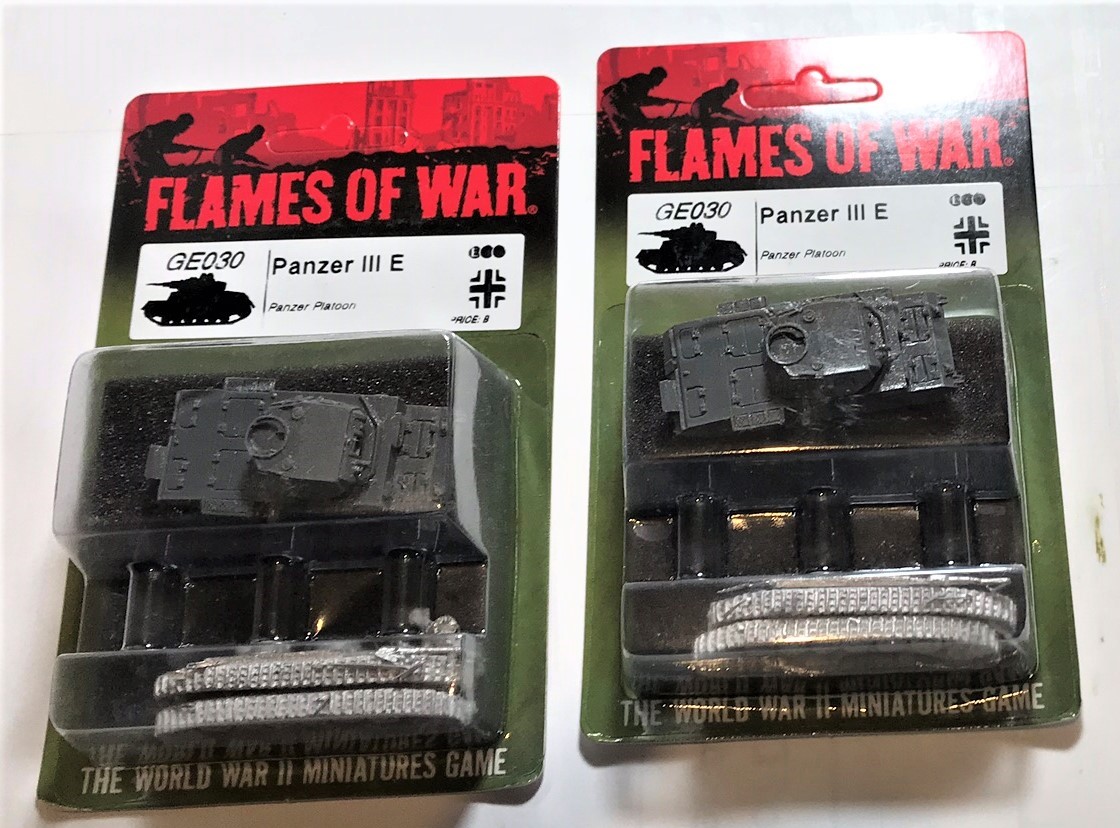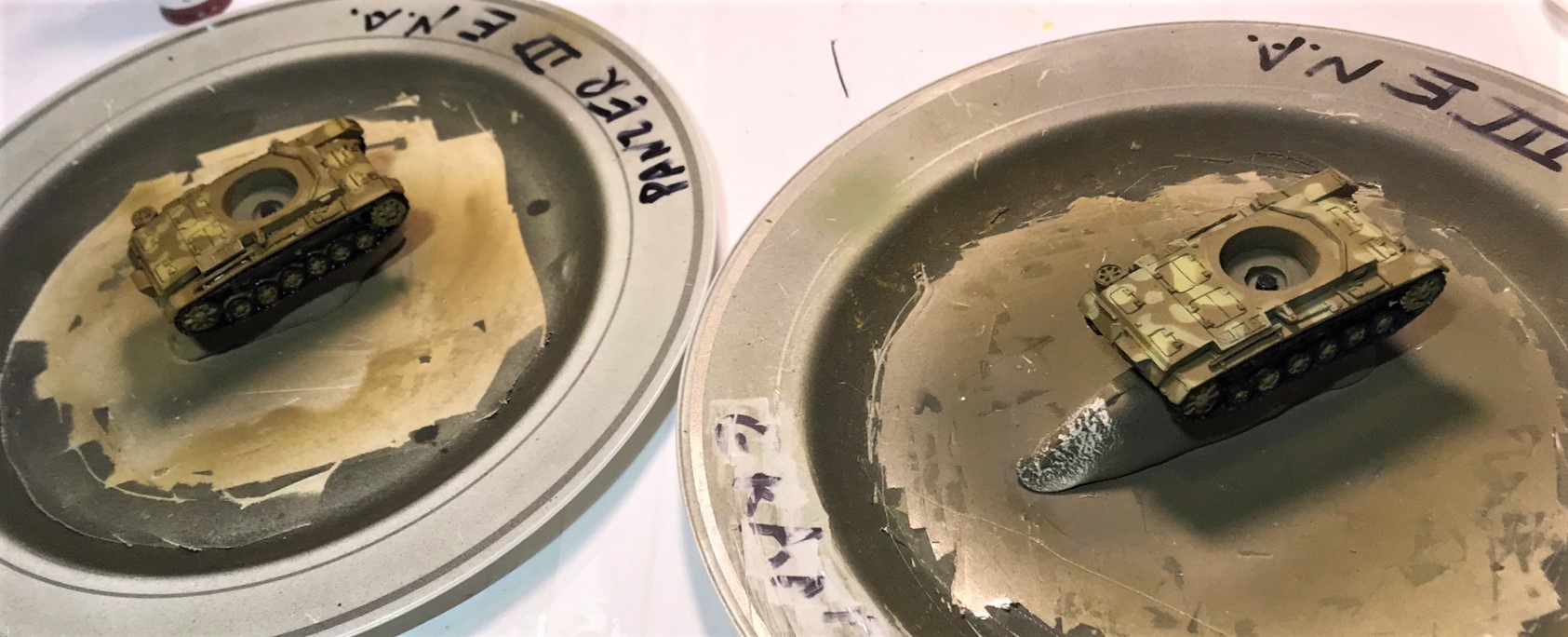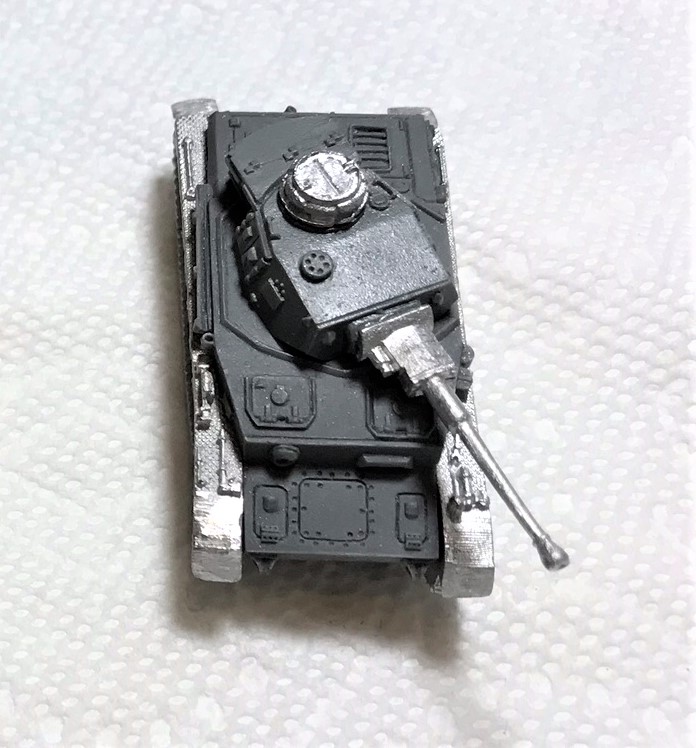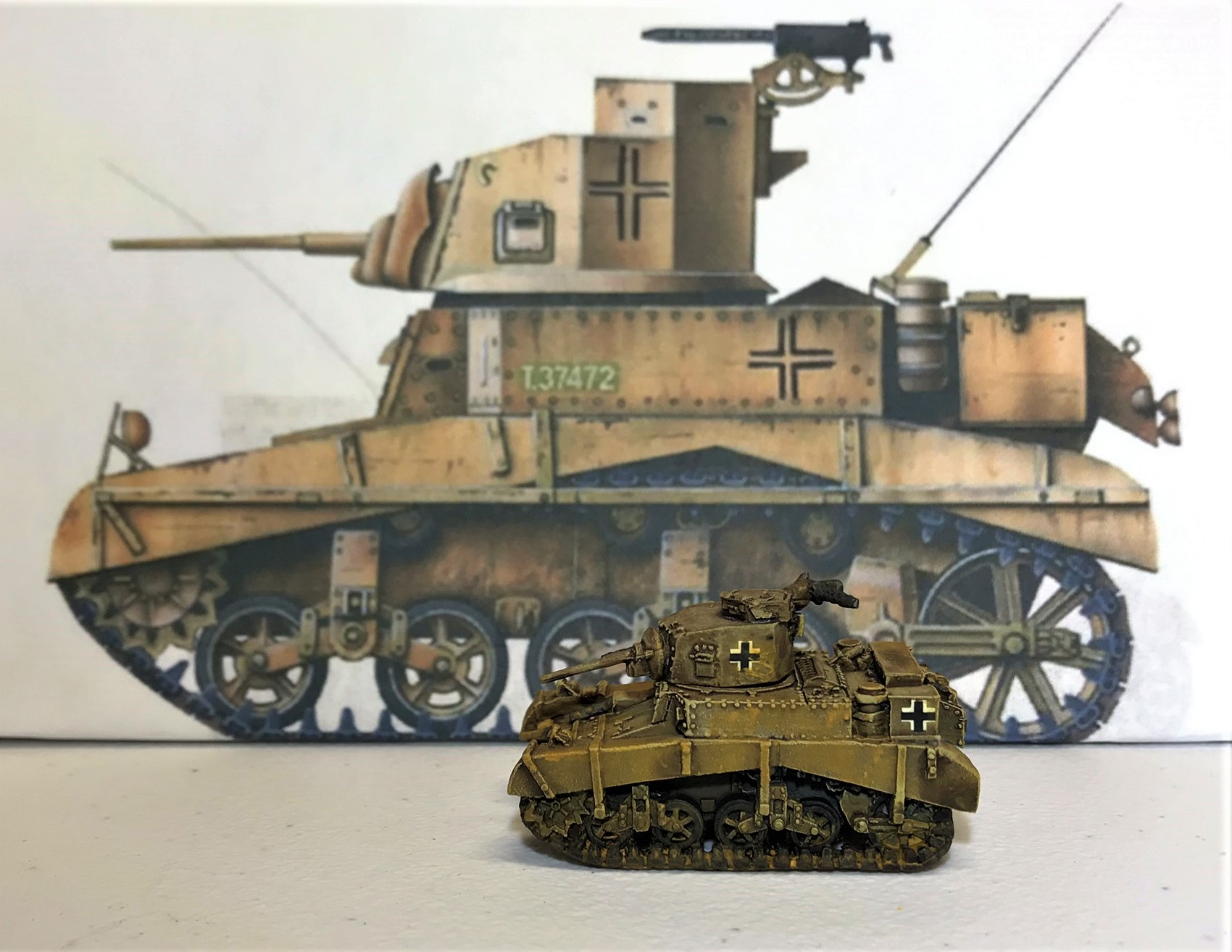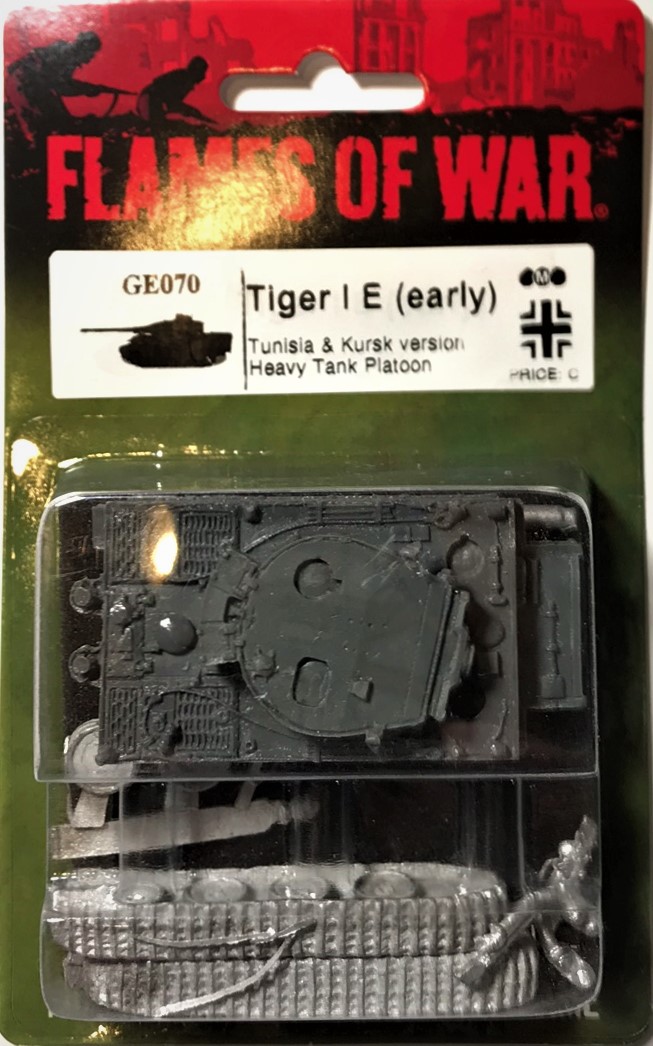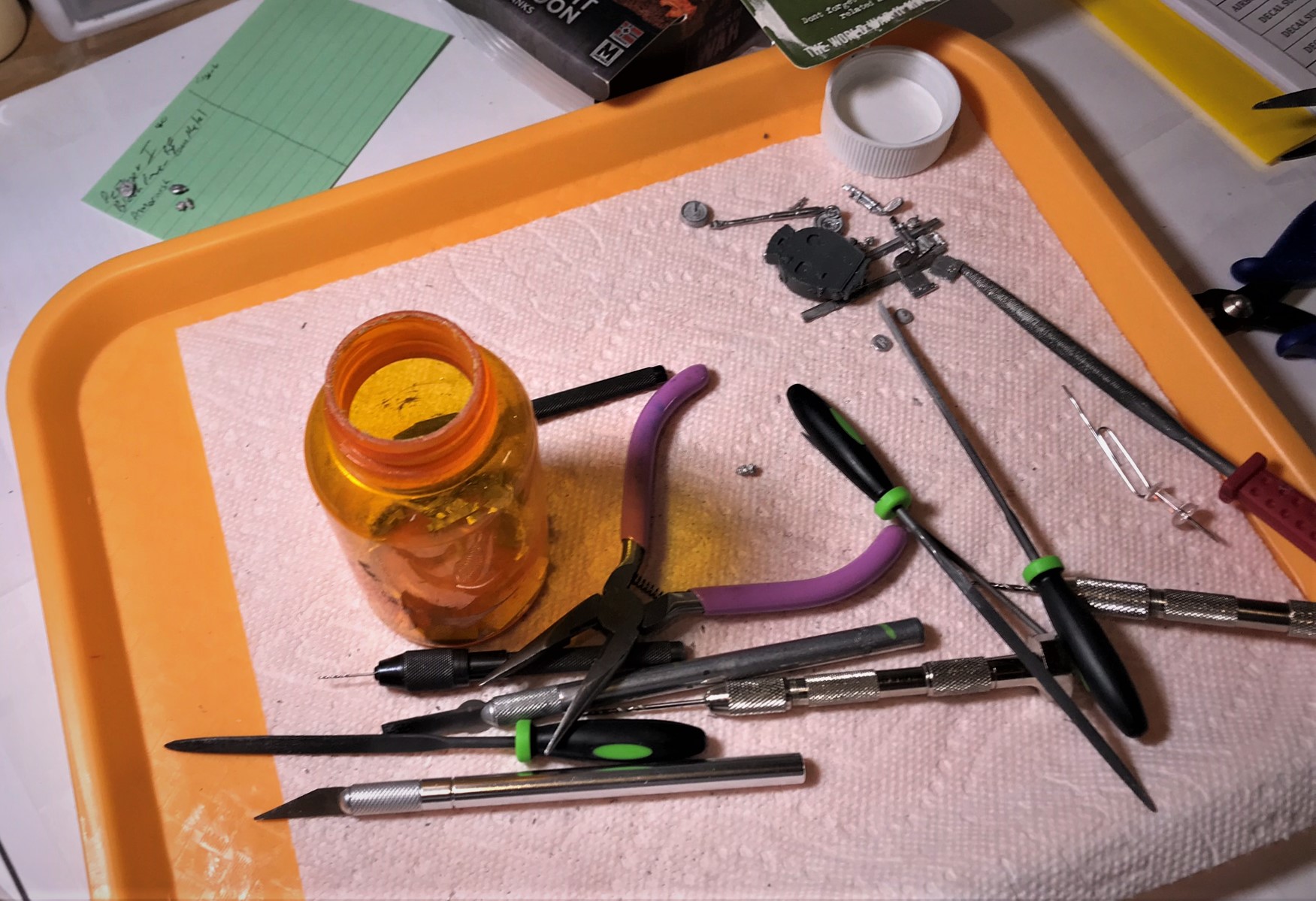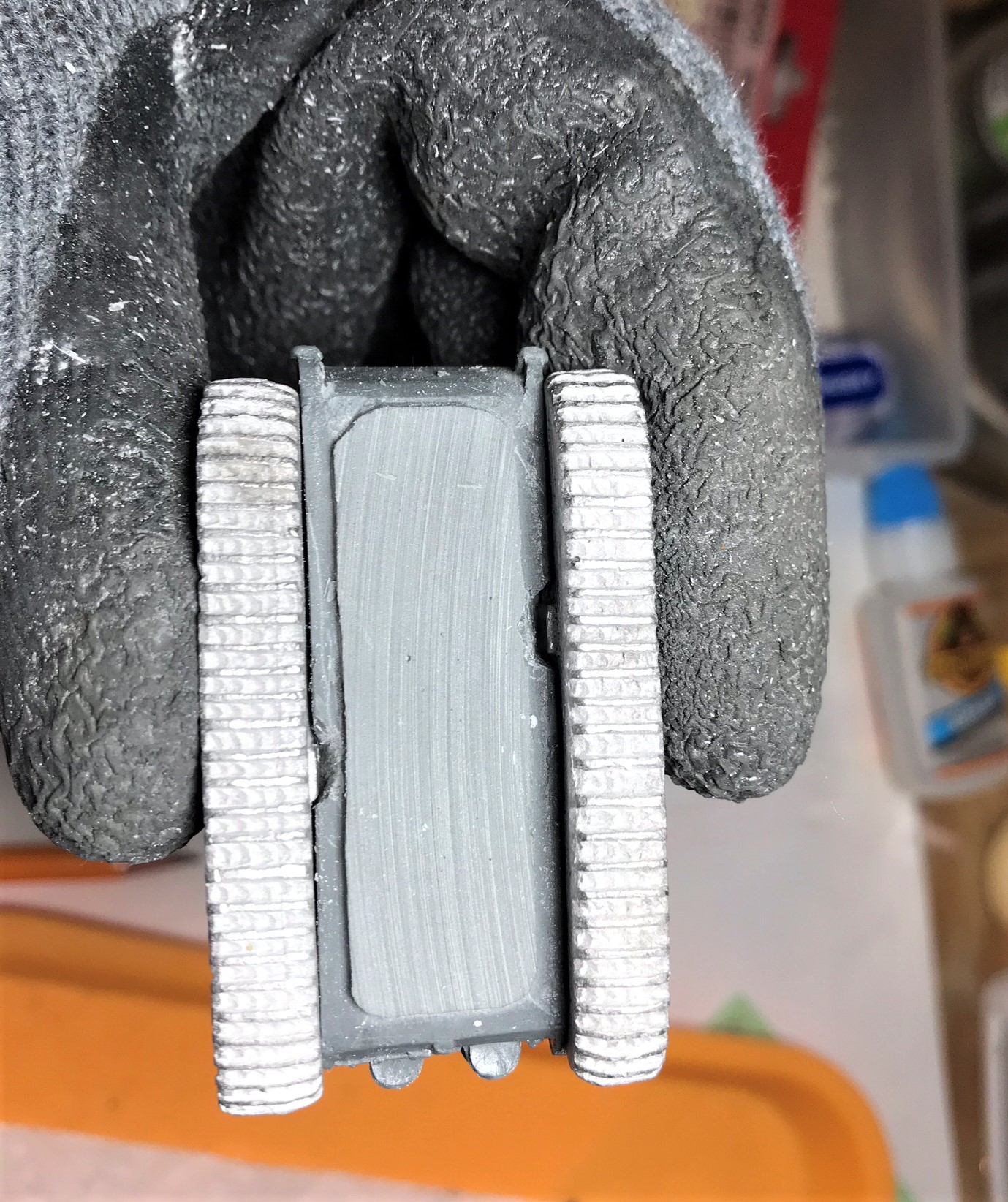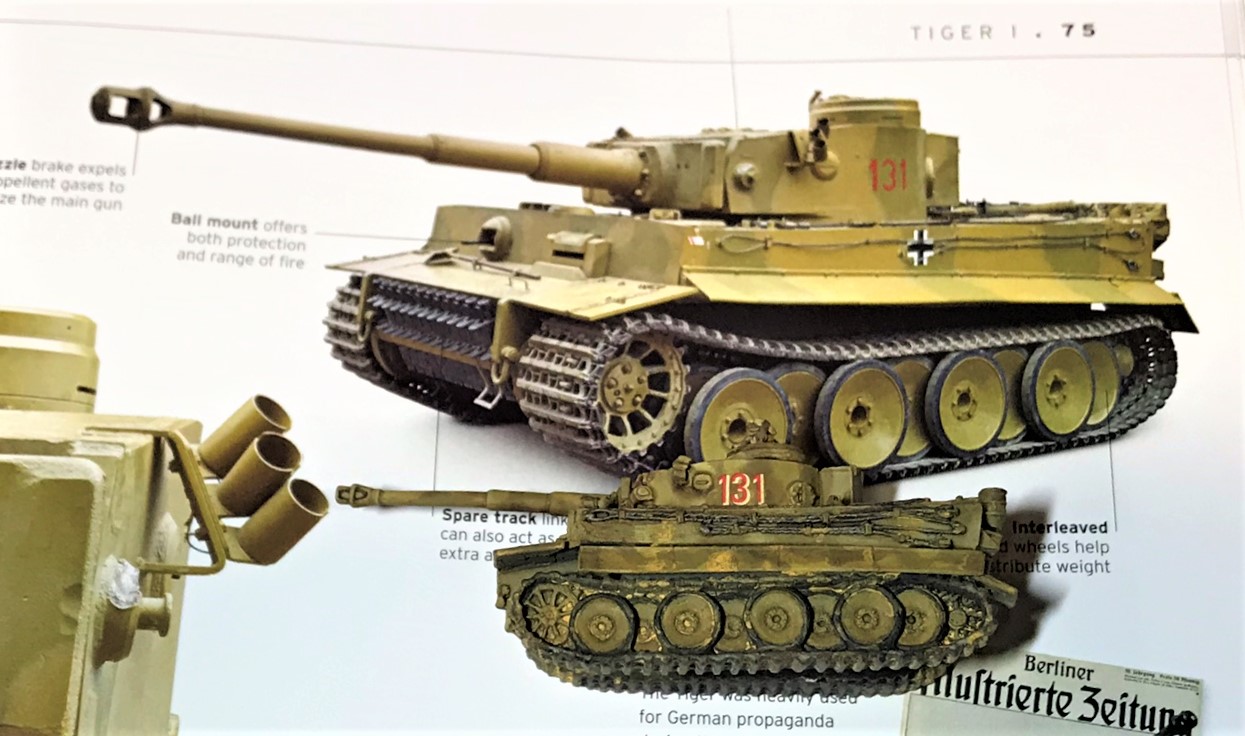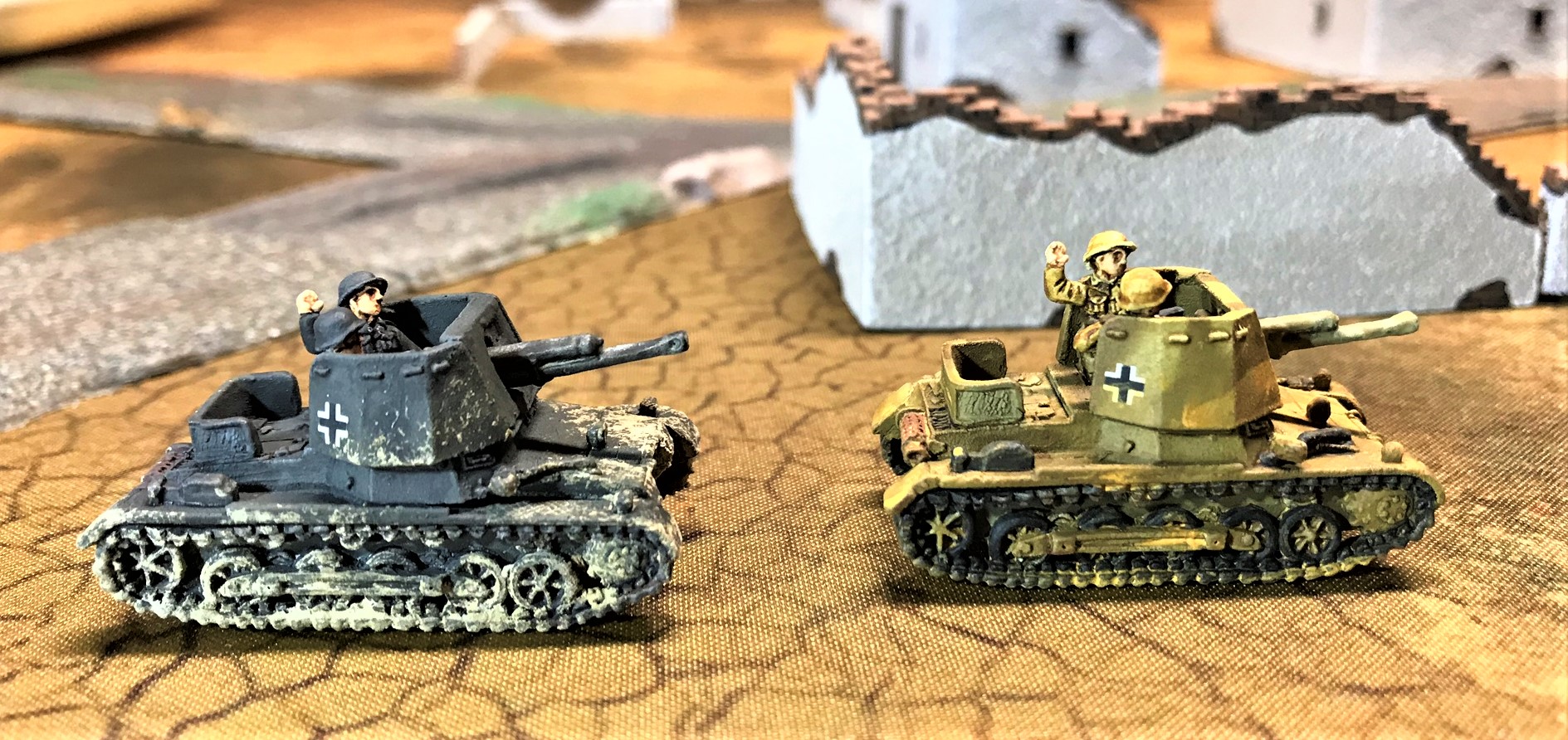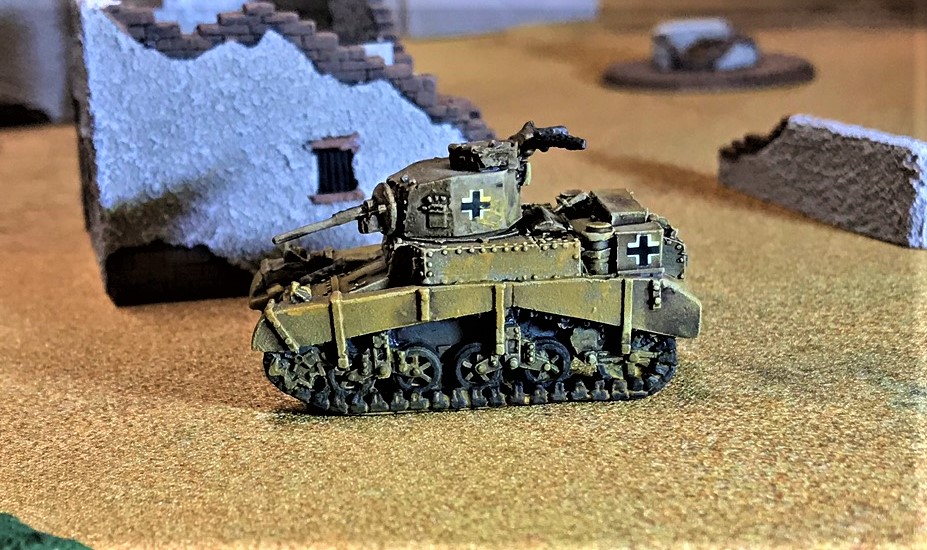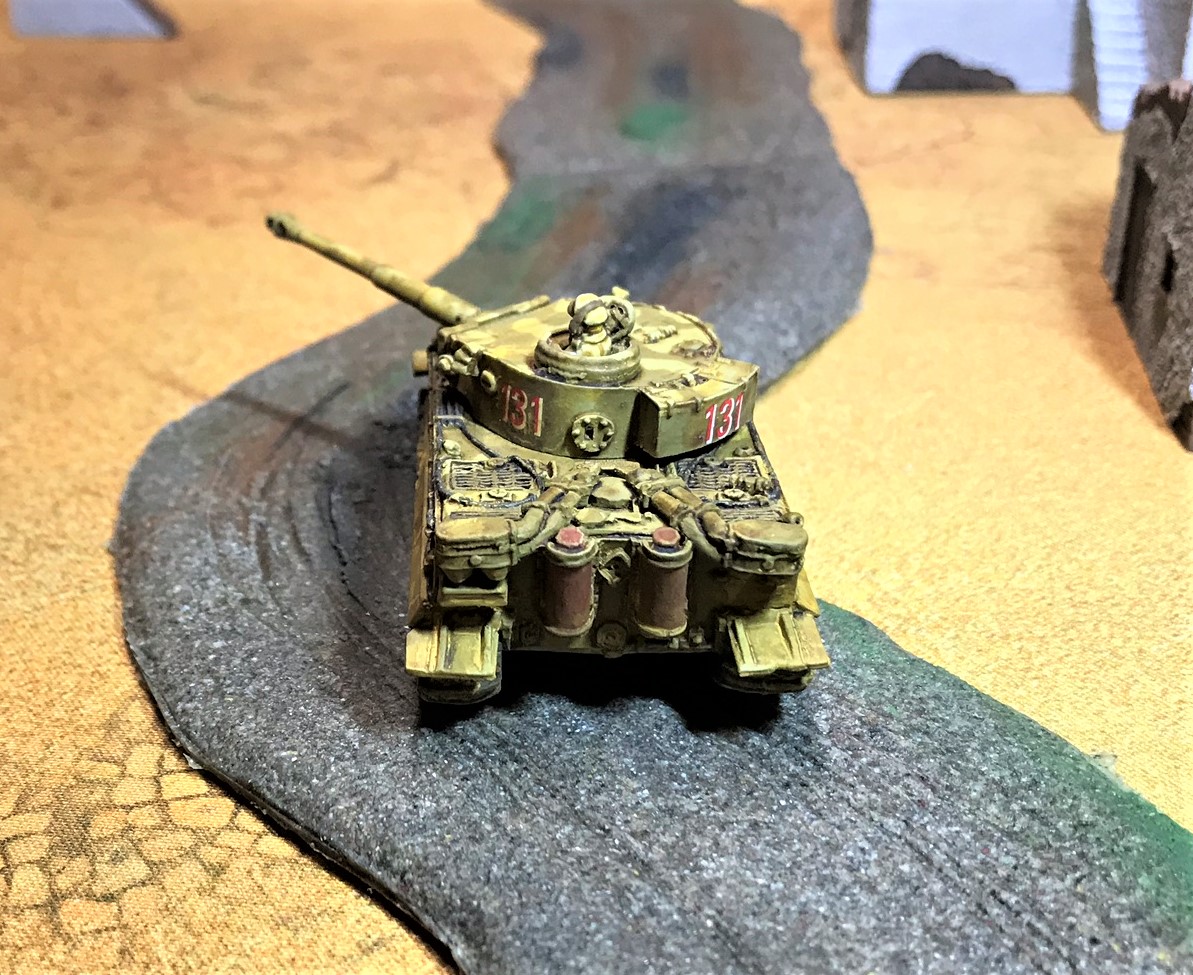I have been heavily engaged hobby-wise since December at building out both 8th Army and Panzer Army Africa tank forces. This blog post describes my last few tanks (well, for now) for What a Tanker© in WWII North Africa. As I plan on running this scenario at HAVOC in April, my goal was to create a diverse-enough tank list so that the players could have a very fun game that also would reflect the wide diversity of tanks and tank destroyers used by both sides from 1940-1943. I analyzed my respective armies’ 15mm/1:100 scale tank rosters, and concluded a couple things. First, my Italians lacked some rivet-laden death traps, also known as Fiat Ansaldo M11/39’s. Second, my British could use another M3 Grant and an M4 Sherman to deal with the German’s Tiger I. Upon further research, I learned that the Australians captured several of the M11/39’s – so that inspired me to build one for the 8th Army as well. Therefore, I built 3 M11/39’s, one Grant, and one Sherman.
This overall North Africa project has been documented in this blog in five previous posts, (which you can read about here, here, here, here, and here) and I plan on a summary post as well in the near future. There I will detail more about the game scenario and how I run it. These 5 tanks brings me to a total of 46 tanks since December for this scenario.
M11/39’s
The M11/39 designation meant that it was an 11-ton tank, built in 1939. 100 were built by Fiat. It had a 37 mm hull-mounted gun and a turret with double 8 mm machine guns. It did not do well in combat, due to its inferior design, especially the turret having no anti-tank capability. For What a Tanker© games, this means that the tank’s turret is meaningless – it is like having a tank destroyer without the benefits of a tank destroyer.
I decided to try a different source for the tank models, and found that I could get three from Old Glory for $25, which seemed reasonable. I also bought a few other vehicles for other scenarios. I was surprised to see that they were completely made of metal – even with a lead warning on the package! As a metal aficionado, I was pleased.
I did have however a concern with the quality of the castings. They all had significantly problematic mold lines on the machine gun turret, and the details on the hull were much less clear than Battlefront models. Still, the price reflected that, so it was up to me to make it work. Which I did.
Two of these would be for the Italians, and one would be an Australian-captured M11/39 tank. While technically not a squad, they certainly could have started out that way in the Italian Army! For that reason – and because my good friend Azazel runs a fun painting challenge each month (and is an Aussie) – these three will constitute a submission from me for March’s “Squad March” painting challenge.



For priming, I went with a brush, as these seemed to be very smooth castings. I worried that it would be difficult to get the paint to “bite”. They also were hollow at the bottom, so I needed to devise a way to mount them for painting. I ended up using a small square dowel and poster tack on small plates.
I did not take as many pictures during the process as I wanted to get these done for a game this weekend, but unfortunately some snow took care of that, and they will get a chance next weekend. I list all the paints I used at the end of the blog for those interested.




Then I used washes, pigments, decals, and other paints to finish them all up. There will be an eye-candy section following the sections on the tanks.
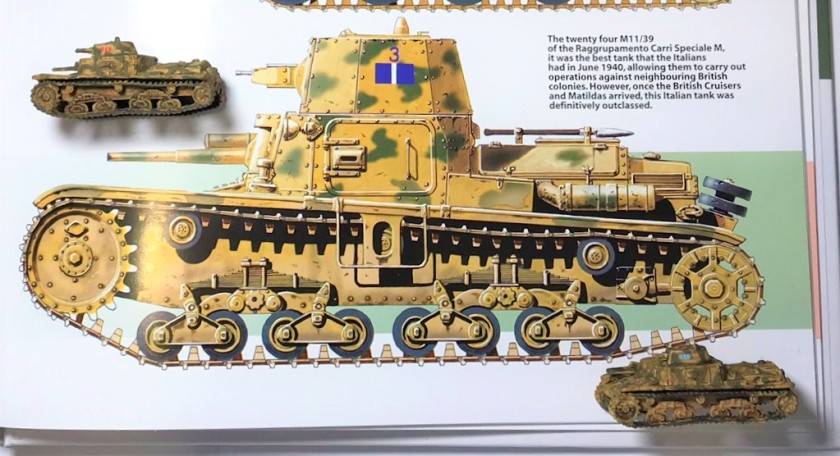


I read that the Aussies used these until they ran out of diesel (their tanks had gasoline engines so diesel was rare). Then they blew them up. I believe that there are no surviving examples of the M11/39 in the world.
M3 Grant
I already had one M3 Grant painted, but with the Germans having a Panzer IVF2 and a Tiger I in the DAK inventory, I wanted to augment the 8th Army’s later war desert forces with another Grant and a Sherman.
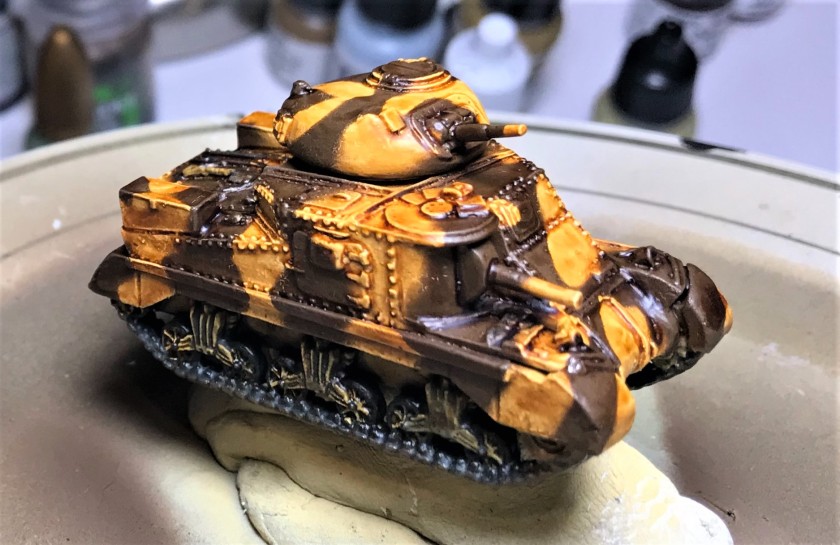

M4 Sherman
The major difference in painting here from the M3 Grant was the camouflage pattern I used.


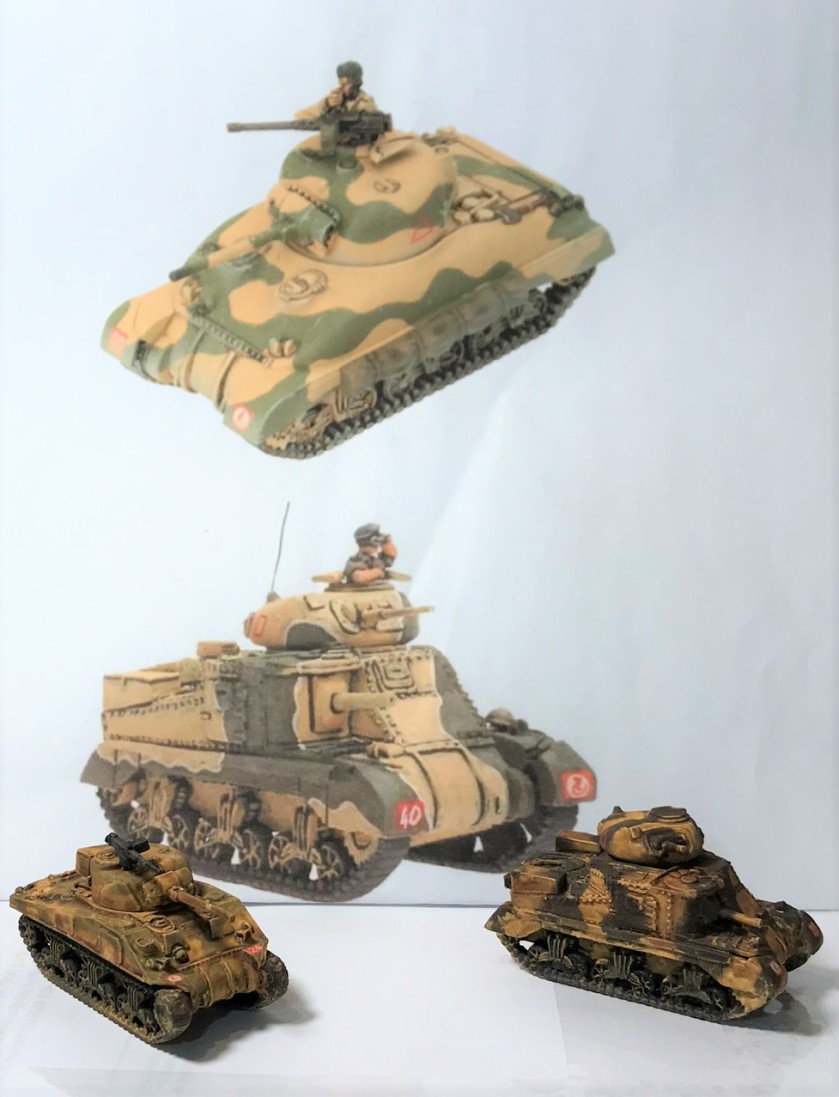
Please let me know any feedback in the comments section, I do appreciate your thoughts. Now it’s time for…
Eye Candy


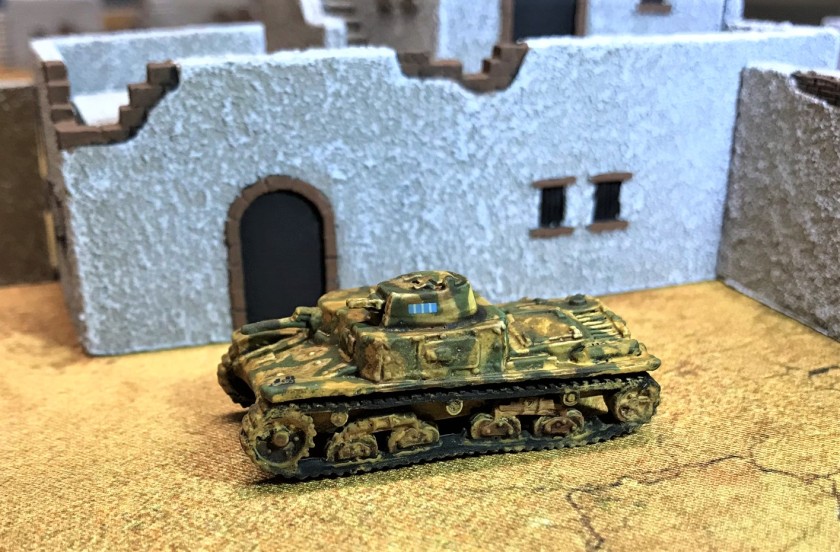




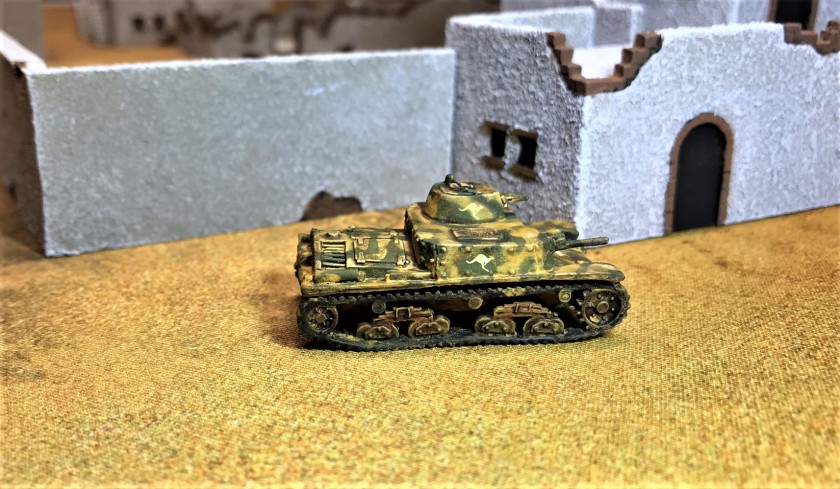





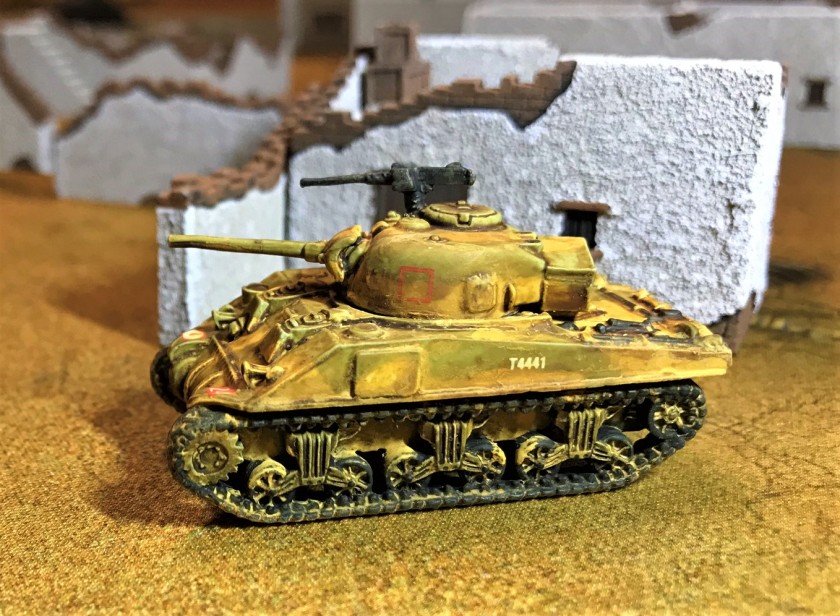





PAINTS, INKS, GLAZES, SHADES, WASHES, PIGMENTS AND FLOCKING USED ON THE M11/39’s:
- Vallejo “Flow Improver”
- Vallejo “Airbrush Thinner”
- Vallejo “Surface Primer – Black”
- Vallejo “Dark Sand”
- Battlefront “Dry Dust”
- Battlefront “Army Green”
- Vallejo Game Air “Black”
- Battlefront “Monty Shade” (shade)
- Army Painter Quickshade “Soft Tone” (wash)
- Army Painter Quickshade “Strong Tone” (wash) – on Australian version only
- Battlefront “Dark Gunmetal”
- Vallejo Mecha Color “Light Rust Wash” (wash)
- Testors “Universal Acrylic Thinner”
- Vallejo “Dark Yellow Ochre” (pigment)
- Vallejo “Light Slate Grey” (pigment)
- Vallejo “Light Yellow Ochre” (pigment)
- Vallejo “Desert Dust” (pigment)
- Vallejo “Natural Umber” (pigment)
- Gorilla Glue
- Vallejo Mecha Varnish “Gloss Varnish”
- Microscale Micro-Set
- Microscale Micro-Sol
- Microscale Satin
- Microscale Liquid Decal Film
- Appropriate decals from Battlefront
- Vallejo Mecha Varnish “Matt Varnish”
- Aleene’s poster tack
- Sponges
PAINTS, INKS, GLAZES, SHADES, WASHES, PIGMENTS AND FLOCKING USED ON THE M3 GRANT AND M4 SHERMAN:
- Vallejo “Flow Improver”
- Vallejo “Airbrush Thinner”
- Vallejo “Surface Primer – Black”
- Vallejo “Dark Sand”
- Battlefront “Chocolate Brown” (M3 Grant only)
- Battlefront “Tommy Green (M4 Sherman only)
- Vallejo Game Air “Black”
- Battlefront “Monty Shade” (shade)
- Army Painter Quickshade “Light Tone” (wash)
- Vallejo Mecha Color “Light Rust Wash” (wash)
- Vallejo Mecha Color “Dark Rust Wash” (wash)
- Testors “Universal Acrylic Thinner”
- Battlefront “Dry Dust”
- Battlefront “Dark Gunmetal”
- Secret Weapons Washes “Armor Wash” (M4 Sherman only)
- Vallejo Model Air “Wood”
- Vallejo “Dark Yellow Ochre” (pigment)
- Vallejo “Light Slate Grey” (pigment)
- Vallejo “Light Sienna” (pigment)
- Vallejo “Desert Dust” (pigment)
- Gorilla Glue
- Vallejo Mecha Varnish “Gloss Varnish”
- Microscale Micro-Set
- Microscale Micro-Sol
- Microscale Liquid Decal Film
- Microscale Satin
- 1/8″ rare earth neodymium magnets
- Appropriate decals from Battlefront
- Vallejo Mecha Varnish “Matt Varnish”
- Aleene’s poster tack
- Sponges
Thanks for looking and for sharing your feedback!
ON MY RESEARCH MATERIALS
As for research materials, I used the same ones as I cited in previous posts plus Google searches and Battlefront’s website. Here the books are in case you are interested – you can find them on Amazon and I highly recommend them all:
- Jean Restayn:WWII Tank Encyclopaedia, 1939-45
- Smithsonian/DK: Tank: The Definitive Visual History of Armored Vehicles
- Michael Green:Axis Armoured Fighting Vehicles of the Second World War (Images of War)
- Robert Jackson:Tanks and Armored Fighting Vehicles Visual Encyclopedia
I would again easily recommend all of these books as really good resources for gamers and modelers. Thanks for looking and for sharing your feedback in the comments section.
Now I might go back to retro sci-fi for a bit! Still have many more tanks to do, but those will be for other scenarios.
Do you have a favorite tank of the ones here? Why? Let me know!
